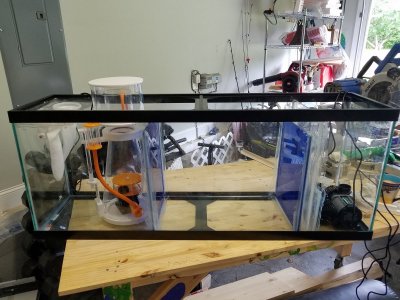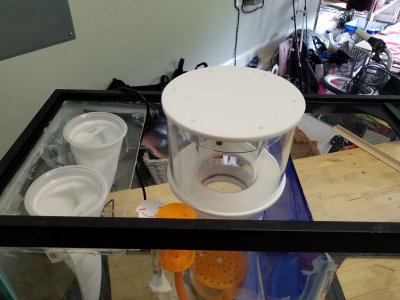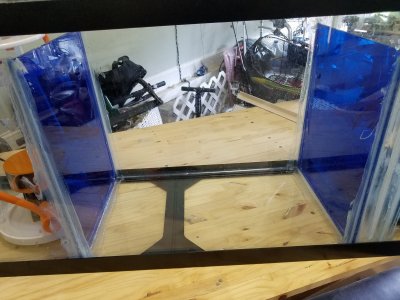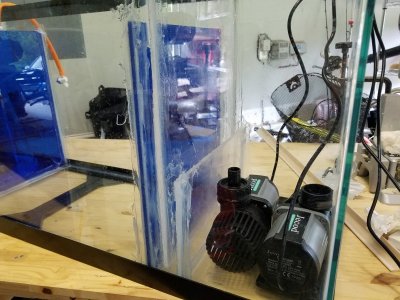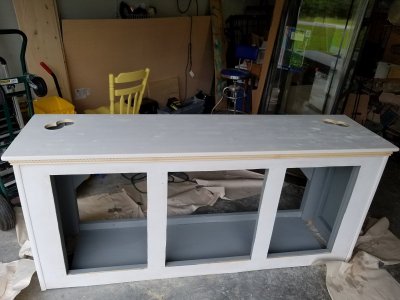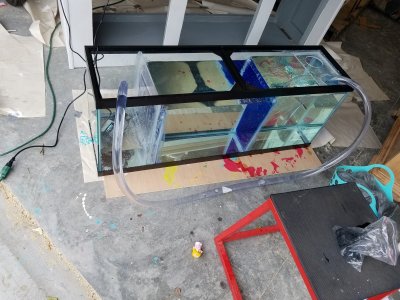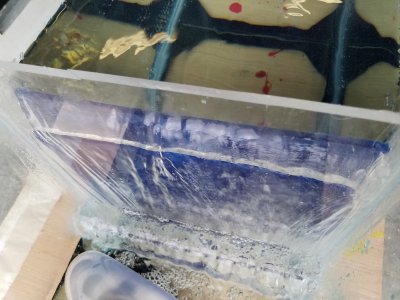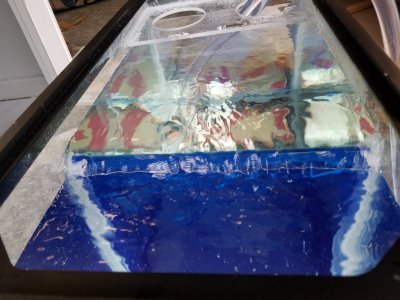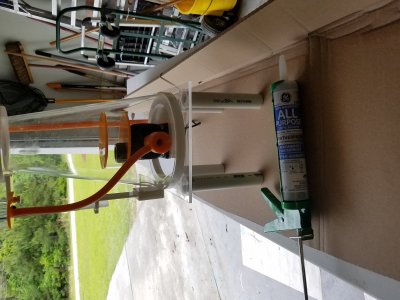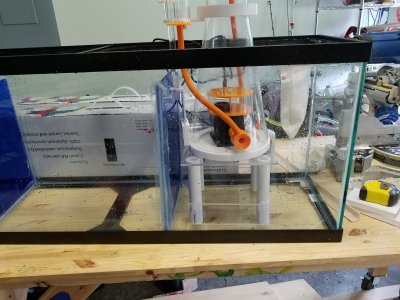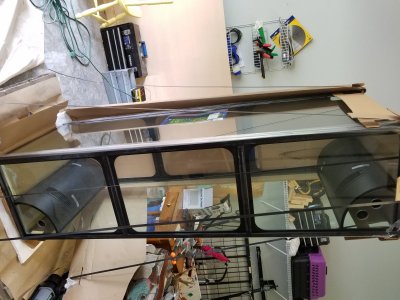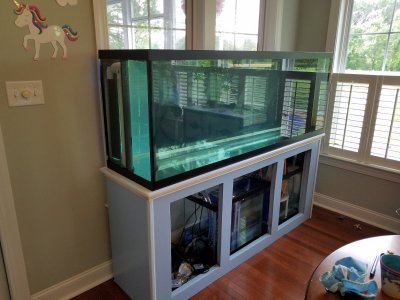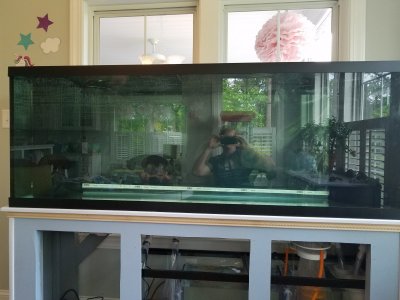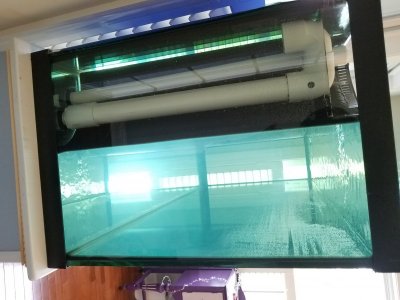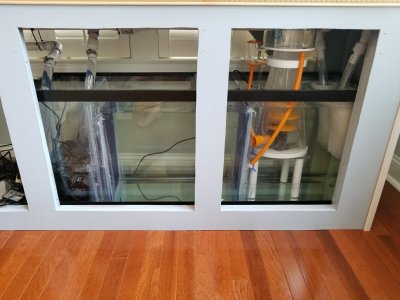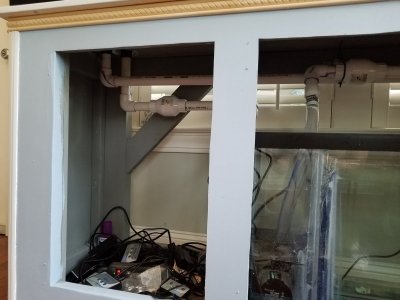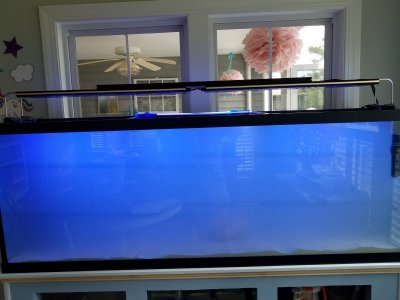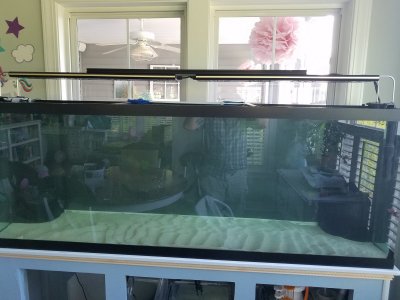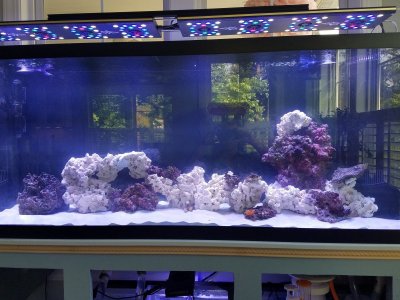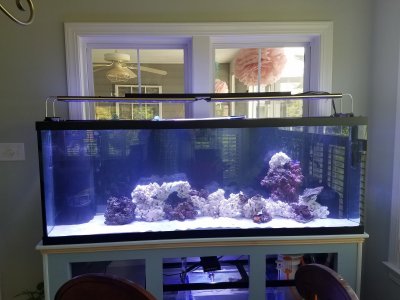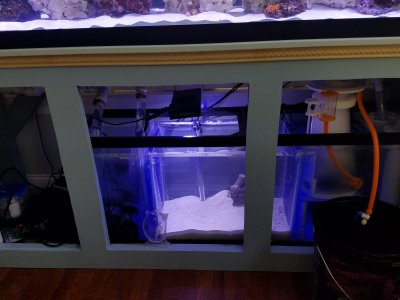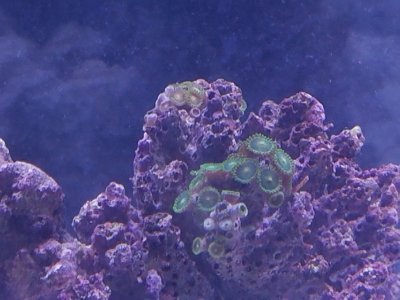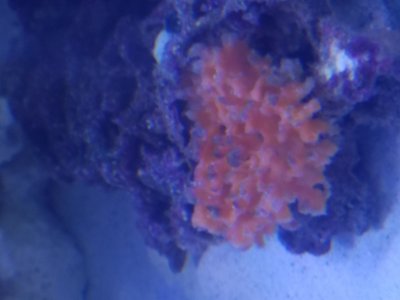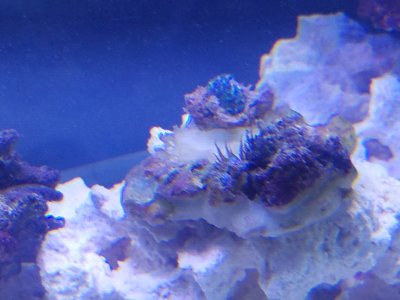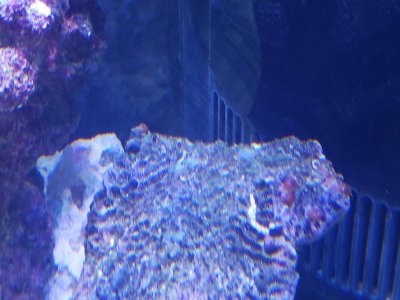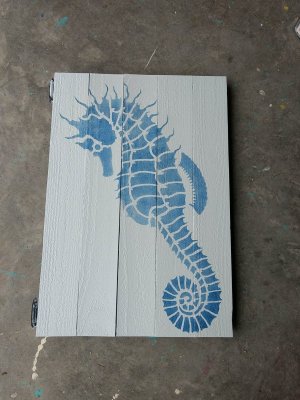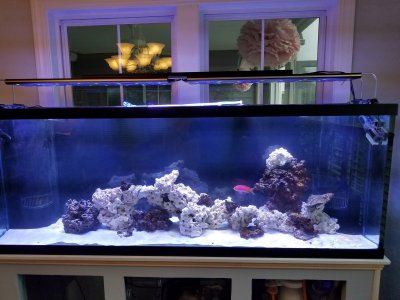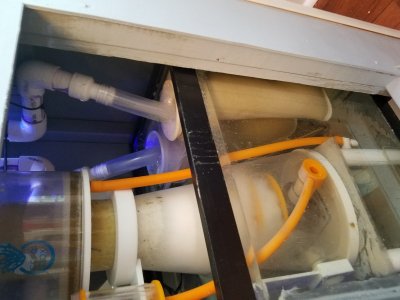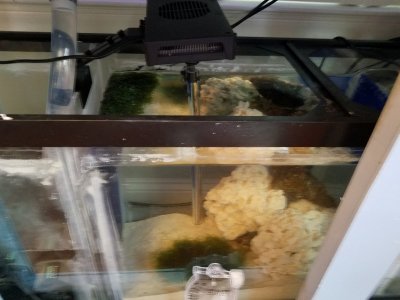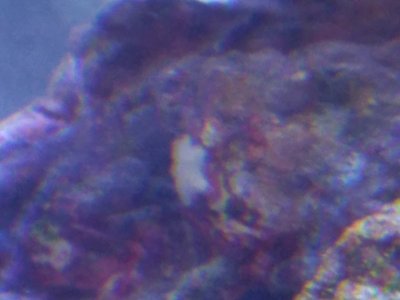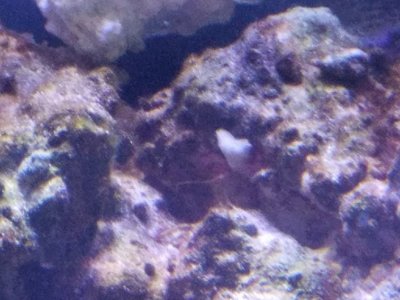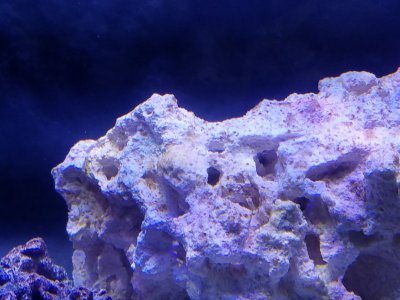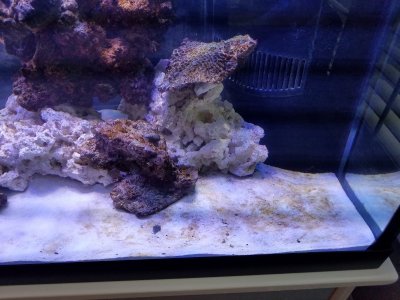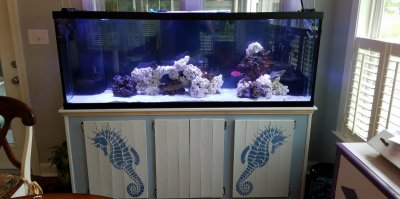- Joined
- May 11, 2018
- Messages
- 155
- Reaction score
- 86
Hey Folks,
Current State (June 19, 2018) - This image will be updated every month.

Full Tank w/Cabinet (June 1, 2018)
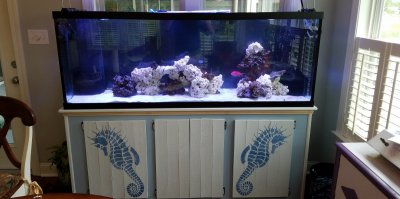
There is a lot of information out there on DIY builds. Getting something semi-cost effective can be challenging. I'm going to document from building the cabinets and sump etc all the way through 2 years of operation. All DIY is using common tools. I don't have laser cutters or cnc's or any of that. I'm also not a wood worker, so no sophisticated stuff. This is all within the reach of an average human being with average skills (and some time). I will mention that being strong is very helpful if those are the tools you are using.
Lets start with the main equipment overviews.
1. Tank - Marineland 72 x 18 x 27 150 gallon reef ready with 2 corner overflows.
2. Sump - DIY 55 gallon from a 12" wide cheapo tank from Pets Mart
3. Cabinet - DIY - Aesthetic: Beach Chic
4. Lights - 2 Photon v2 ReefBreeders 2/custom T-Track
5. Pumps - 2 maxspect gyre 230's.
As of today it is in progress. So I'll start with the cabinet since that has been the main focus over the past 2 weeks. The cabinet will be getting its first painting later today as well.
The cabinet is built completely out of 2x4s for the primary supports with standard construction star screws. According to the math it should support some where around 20,000lbs; I figure I'm likely safe with those numbers. The number is reduced to 20,000 due to the long span in the back. I added some 45 degree angle supports to help distribute that middle weight; but I still wanted a large back so I can get the sump in easily. I'll likely put another 2x4 in the middle back after installation just for good measure.
Tools required: Miter Saw, Table Saw, Jig Saw, Power Screw Driver. I only used the table saw to even stuff up; I could have completed this without it. The trim hides the ugly jig saw cuts.
Here is the cabinet with facia board and no doors:
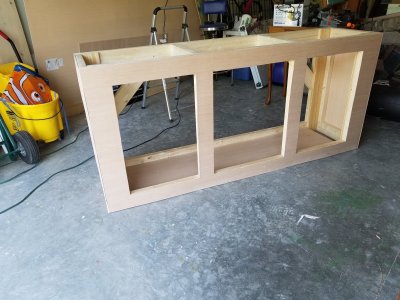
Here is the cabinet with doors.
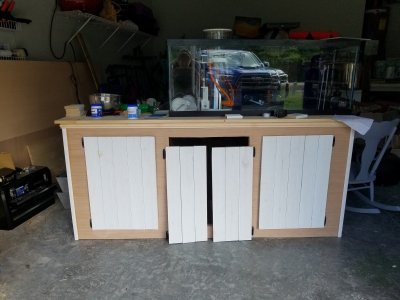
Here is the cabinet with a zoom on the trim and cornering.
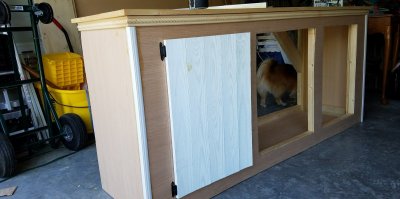




Current State (June 19, 2018) - This image will be updated every month.
Full Tank w/Cabinet (June 1, 2018)

There is a lot of information out there on DIY builds. Getting something semi-cost effective can be challenging. I'm going to document from building the cabinets and sump etc all the way through 2 years of operation. All DIY is using common tools. I don't have laser cutters or cnc's or any of that. I'm also not a wood worker, so no sophisticated stuff. This is all within the reach of an average human being with average skills (and some time). I will mention that being strong is very helpful if those are the tools you are using.
Lets start with the main equipment overviews.
1. Tank - Marineland 72 x 18 x 27 150 gallon reef ready with 2 corner overflows.
2. Sump - DIY 55 gallon from a 12" wide cheapo tank from Pets Mart
3. Cabinet - DIY - Aesthetic: Beach Chic
4. Lights - 2 Photon v2 ReefBreeders 2/custom T-Track
5. Pumps - 2 maxspect gyre 230's.
As of today it is in progress. So I'll start with the cabinet since that has been the main focus over the past 2 weeks. The cabinet will be getting its first painting later today as well.
The cabinet is built completely out of 2x4s for the primary supports with standard construction star screws. According to the math it should support some where around 20,000lbs; I figure I'm likely safe with those numbers. The number is reduced to 20,000 due to the long span in the back. I added some 45 degree angle supports to help distribute that middle weight; but I still wanted a large back so I can get the sump in easily. I'll likely put another 2x4 in the middle back after installation just for good measure.
Tools required: Miter Saw, Table Saw, Jig Saw, Power Screw Driver. I only used the table saw to even stuff up; I could have completed this without it. The trim hides the ugly jig saw cuts.
Here is the cabinet with facia board and no doors:

Here is the cabinet with doors.

Here is the cabinet with a zoom on the trim and cornering.

Last edited:





